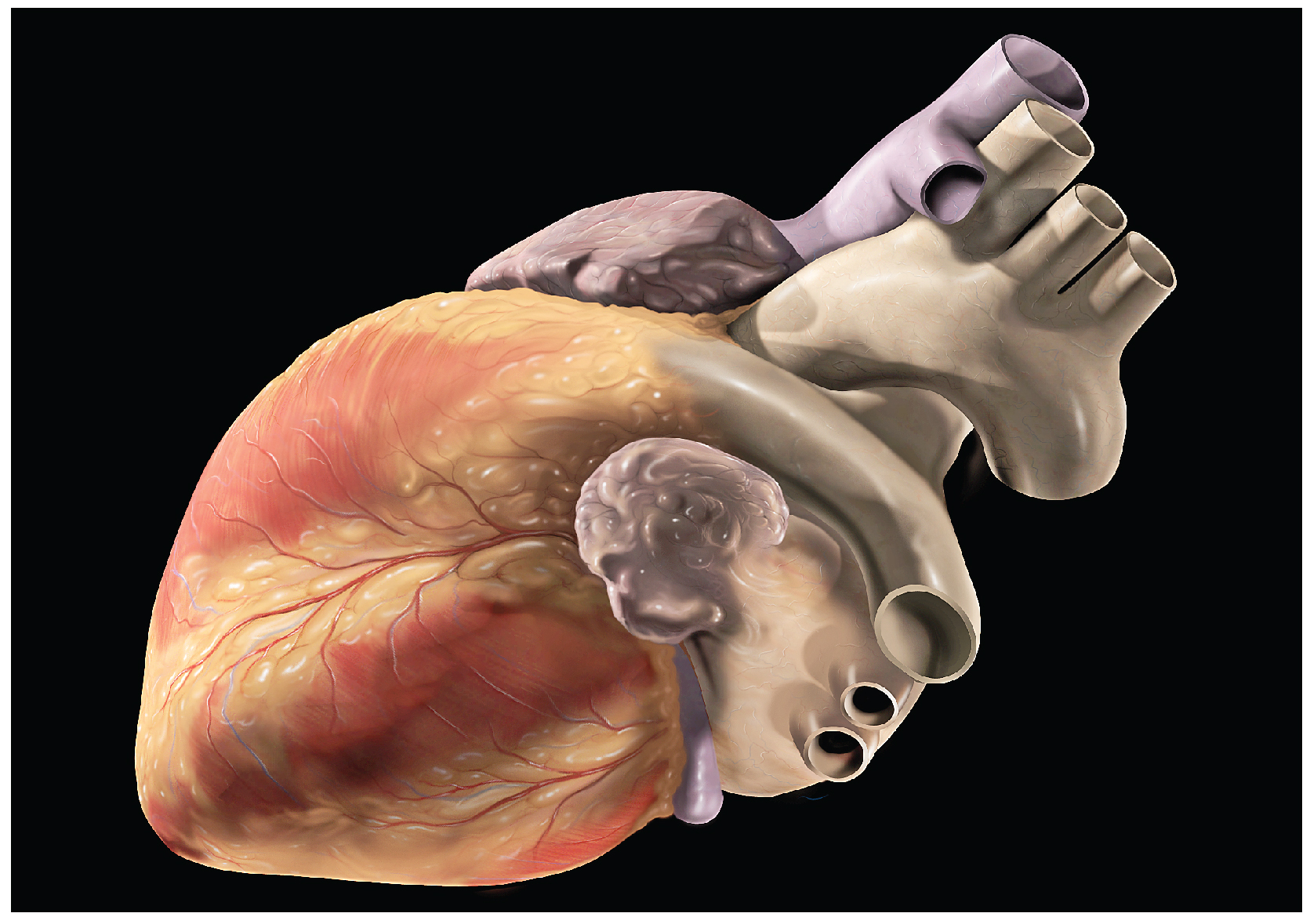17.1: Introduction to the Heart
- Page ID
- 22374
Chapter Learning Objectives
After studying this chapter, you will be able to:
- Describe the size, shape, and location of the heart
- Identify and describe the interior and exterior parts of the human heart
- Describe the path of blood through the cardiac circuits
- Compare atrial and ventricular systole and diastole
- Explain the cardiac conducting system
- Describe the process and purpose of an electrocardiogram
- Describe fetal heart development
In this chapter, you will explore the remarkable pump that propels the blood into the vessels. The heart functions as a “double pump,” since its contraction develops the pressure that ejects blood into the major vessels for two separate circuits of blood flow: blood from the left side of the heart flows into the aorta for the systemic circuit and blood from the right side of the heart flows into the pulmonary trunk for the pulmonary circuit. From these vessels, blood is distributed to the remainder of the body. Although the connotation of the term “pump” suggests a mechanical device made of steel and plastic, the anatomical structure is a living, sophisticated muscle. As you read this chapter, try to keep these twin concepts in mind: pump and muscle.
Although the term “heart” is an English word, cardiac (heart-related) terminology can be traced back to the Latin term, “kardia.” Cardiology is the study of the heart, and cardiologists are the physicians who deal primarily with the heart.

Contributors and Attributions
OpenStax Anatomy & Physiology (CC BY 4.0). Access for free at https://openstax.org/books/anatomy-and-physiology


